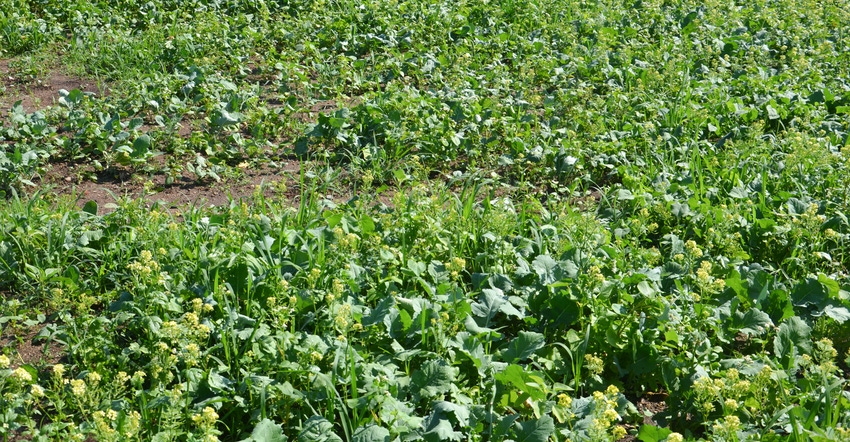November 13, 2019

Winters in Indiana bring a little bit of everything. Sometimes they’re brutally cold with snow. Other times they’re relatively mild with little snow. Anymore, it seems like we have all that in one winter, with lots of temperature variation and periods where snow piles up.
No matter what TV meteorologists or the Farmers’ Almanac says for winter forecasts, most people spend some time getting ready for winter. Propane tanks are topped off, firewood is stacked, windows are checked to make sure they’re not leaking, insulation is added, water pipes are protected, and service companies are busy doing annual maintenance on furnaces.
If you’re a farmer or landowner who rents out cropland, is your farm ready for a long, hard winter? Are your fields blanketed with residue remaining from this year’s crop, protecting the soil surface from water and wind erosion? Have you planted cover crops on fields most susceptible to winter erosion?
How cover crops, residue help
How do crop residue, less tillage and cover crops protect and winterize your soil? Many areas of the state are subject to water and wind erosion. Leaving crop residue in place, along with a green cover, will protect the soil surface from eroding.
A secondary benefit in areas prone to wind erosion that also get large snow events is that standing cornstalks and cover crops can reduce snow drifting. Trapping snow in standing cornstalks or a cover crop reduces the amount of snow blowing onto the road, meaning fewer slick spots on roadways.
Indiana farmers have planted around a million acres of cover crops per year over the last pew years, helping Indiana become a national leader in cover crop adoption. These acres have been winterized. The fields have been planted to cover crops to protect the soil, scavenge available nutrients, feed soil microbiology and improve soil organic matter.
Need more cover
A million acres sounds like a lot of cover crops until you consider that it’s less than 10% of the cropland planted to annual crops. Much of Indiana seems to receive at least one intense rainfall event annually on semi-frozen soil.
Rainfall events are most problematic when the topsoil has warmed enough that it’s no longer frozen, but the soil below is still frozen. This rainfall can’t infiltrate the soil and becomes 100% runoff. These events almost always lead to erosion of topsoil that must be dealt with in the spring before planting.
Crop residue and a green, growing cover crop will go a long way to reduce erosion, protect the soil and improve water quality. If all of Indiana’s cropland was winterized with a cover crop, the positive impact on the water quality of the Great Lakes; the Wabash, Ohio and Mississippi rivers, and the Gulf of Mexico would be tremendous!
There is much work to be done if all of Indiana is to become “winterized.” The time has come to winterize your fields. Join the soil health movement today, and see the benefits tomorrow and every day to come. Protect and turn your crop fields green in the winter so visitors will see Indiana farmers are doing their part to not only protect our soil resource but to build upon it as well.
Donovan is a district conservationist with the Natural Resources Conservation Service. He writes on behalf of the Indiana Conservation Partnership.
About the Author(s)
You May Also Like






